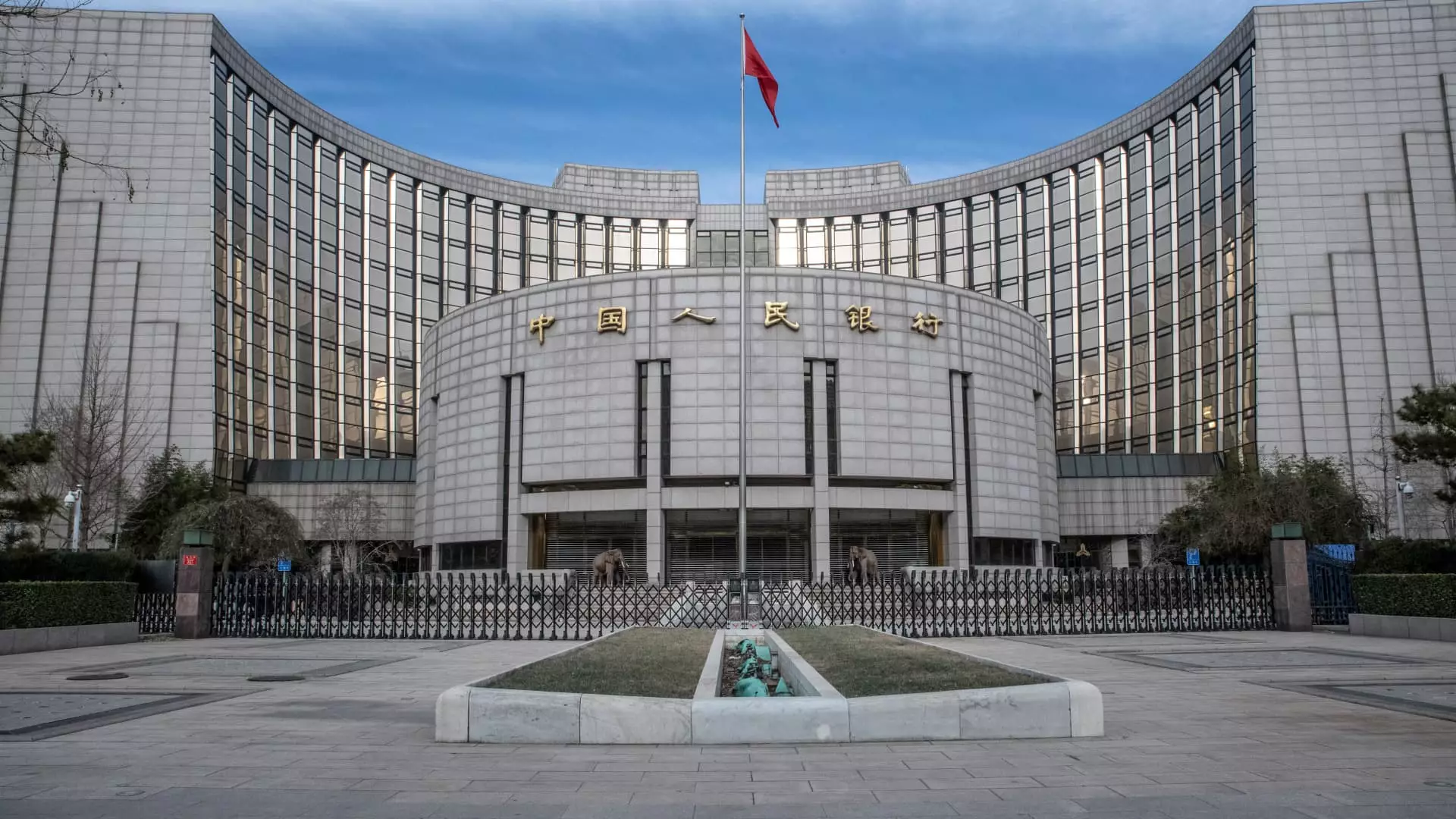In a significant move that reflects the cautious optimism of its authorities, China’s central bank, the People’s Bank of China (PBOC), decided to maintain its key benchmark lending rates on Wednesday. The 1-year loan prime rate (LPR) remains at 3.1%, while the 5-year LPR is set at 3.6%. This decision was largely anticipated by market analysts, who predicted that the bank would refrain from altering these rates as officials continue to navigate the complexities of recent economic stimulus measures. According to Bruce Pang, chief economist at JLL, there is “no immediate need” for adjustments, highlighting that the Chinese government is still gauging the efficacy of its economic interventions.
One of the critical factors influencing this decision is the current condition of net interest margins at Chinese commercial banks, which are at record lows. These constrained margins have significantly restricted the banks’ ability to reduce lending rates further. Pang notes a rather optimistic future outlook, suggesting that while an immediate rate cut may not be on the horizon, there is potential for reductions in 2025. This indicates a measured approach by the PBOC, as it weighs immediate economic needs against longer-term stability.
China’s economic landscape has exhibited mixed signals, reinforcing the need for careful evaluation of monetary policy. Recent data for October revealed disappointing growth rates in key sectors, such as industrial production and fixed asset investment, exacerbating concerns about the nation’s economic momentum. The lack of improvement in the real estate sector further complicated matters, revealing a decline in investments that further entrenched the economic malaise. Despite these challenges, retail sales did surpass expectations with a notable year-on-year increase of 4.8%. This suggests that the stimulus measures may be beginning to take effect, albeit in a limited capacity.
The Chinese authorities have implemented a series of stimulus measures since late September, aiming to revitalize an economy struggling with the multifaceted implications of a protracted property crisis alongside tepid consumer sentiment. The Ministry of Finance unveiled a substantial fiscal package, amounting to 10 trillion yuan (approximately $1.4 trillion), intended to alleviate local government debt issues while also hinting at further, potential economic support in the upcoming year. This course of action illustrates the government’s commitment to bolster investor confidence and foster economic recovery.
However, speculations from major financial institutions add another layer to the analysis of China’s economic prospects. Morgan Stanley cautions that economic growth may decelerate to around 4% over the next two years and has adjusted its position on Chinese equities to a slight underweight. This downgrade stems from apprehensive outlooks regarding a deflationary environment and increasing trade tensions with key partners. Similarly, Goldman Sachs anticipates a decline in GDP growth to 4.5% in 2025, down from 4.9% in 2023, yet maintains a positive outlook on Chinese equities, projecting a 13% increase in the CSI 300 index.
The broader implications of Donald Trump’s recent election and the potential for new tariffs on Chinese goods further complicate the landscape for China’s export-driven economy. Amid these uncertainties, the PBOC’s cautious approach to monetary policy reflects a broader strategy that seeks to balance immediate economic recovery with long-term financial stability. As the Chinese government continues to evaluate its recent policies and external factors, the path forward appears to demand both patience and flexibility to navigate the intricate web of domestic and global economic challenges. The effective implementation of stimulus measures coupled with astute fiscal management could chart a promising course for the nation’s economy, provided it adapts well to the evolving economic conditions.


Leave a Reply